3 November 2009
THE EARTH AIN'T FLAT AND I HAVE THE EVIDENCE
K20D with the SMC Pentax-DA10-17 fisheye, stitched with PTGui from 7 originals.
This is Stockholm (capital of Sweden) shot from ~115m above sea level (you can hint the baltic sea in the inner archipelageo on the upper right, north-east). I'm standing on a ~12m metal frame tower on top of the elevator machine room (dark grey square) on top of the concrete tower. The elevator goes to the 20th floor, after which we have to climb three steep stairs indoor, a fourth outdoor up in the machine room roof, and then 12 m vertical ladder to reach the platform. The tower is used for radio communication and mobile phone networking.
From the platform my research group at Stockholm University samples the concentration of carbondioxide and aerosol particles and turbulent motions which enables us to derive the emissions of both carbondioxide and aerosol particles from traffic combustion to the north and west of the tower. In the south to south-east we instead see how the forest area takes up carbondioxide through the photosynthesis of the plants and how particles are deposited.
The purpose of this photo is to show the surroundings and the different source or sink regions for carbondioxide and particles around the measurement site. It will probaby be included in some posters on scientific conferences and some publication in scientific journals together with measured data.
I'm not completely happy with the result because after having taken some shot inside the machine room where we have our computer and data logging I forgot to decrease the ISO when I got up onto the platform, so I need to go there again with the camera. Then I will probably also try to use the SMC Pentax-DA15mm ltd. After this shot I changed the settings on my K20D so that the top display show the ISO instead of remaining pictures on the memory card. Hopefully it will help avoiding such misstakes even when I'm in a cold and windy place like this.
Some land marks: to the north to north-west are the central Stockholm including Södermalm and the old town. If you zoom in there are many familiar land marks for those who are familiar with Stockholm. Just north of the tower is what used to be a worn down harbour area, Hammarby-hamn, but is since a few years a fancy living, office and shopping area (large emissions from cars here). Just north-east of the tower surfaces one of the exits from the long traffic tunnel that goes south of Stockholm. The green area to the east and south-east are the northern end of the Tyresö park, a large protected green area, but as you can see, the living areas just south of the tower are also rather green with low emissions. To the south-west you can see the indoor arena "Globen" (the white globe), a well known land mark of modern Stockholm (no it was not where Hamlet put up his original plays).
I must say that I'm really impressed by the PTGui software. Powerfull, easy to learn, inexpensive. The demo version let you try most functions.
26 September 2009
HOWER FLOWER
 Despite an amazingly long summer, the garden life goes towards autumn, but we still have hower flies and sun flowers. A while ago I played around with the SMC Pentax-DFA 100mm f2.8 macro with converter (for reach), flash with diffuser on the K20D, and I was pleased with the result. Hope you like them too.
Despite an amazingly long summer, the garden life goes towards autumn, but we still have hower flies and sun flowers. A while ago I played around with the SMC Pentax-DFA 100mm f2.8 macro with converter (for reach), flash with diffuser on the K20D, and I was pleased with the result. Hope you like them too.
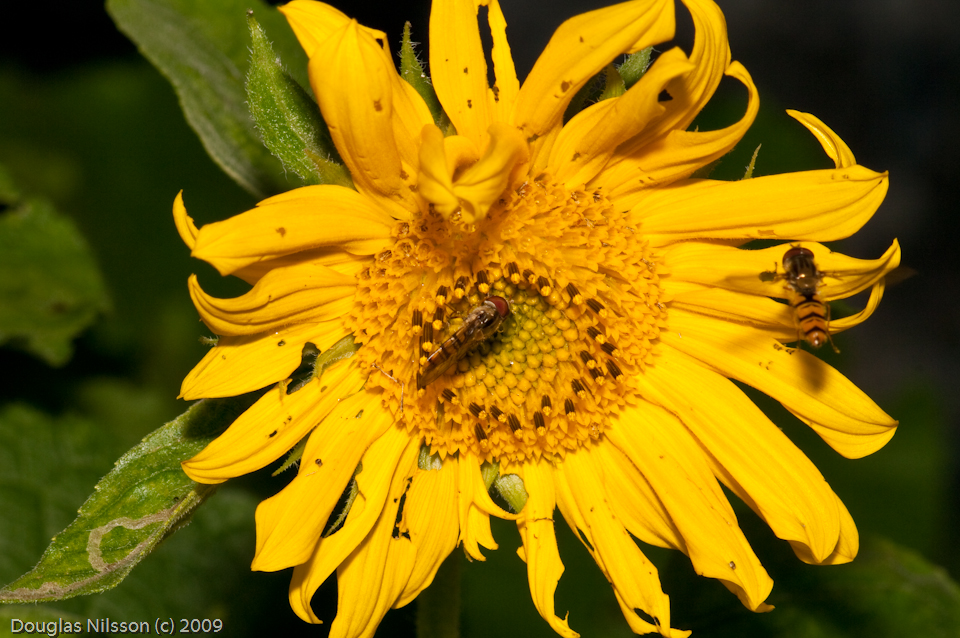
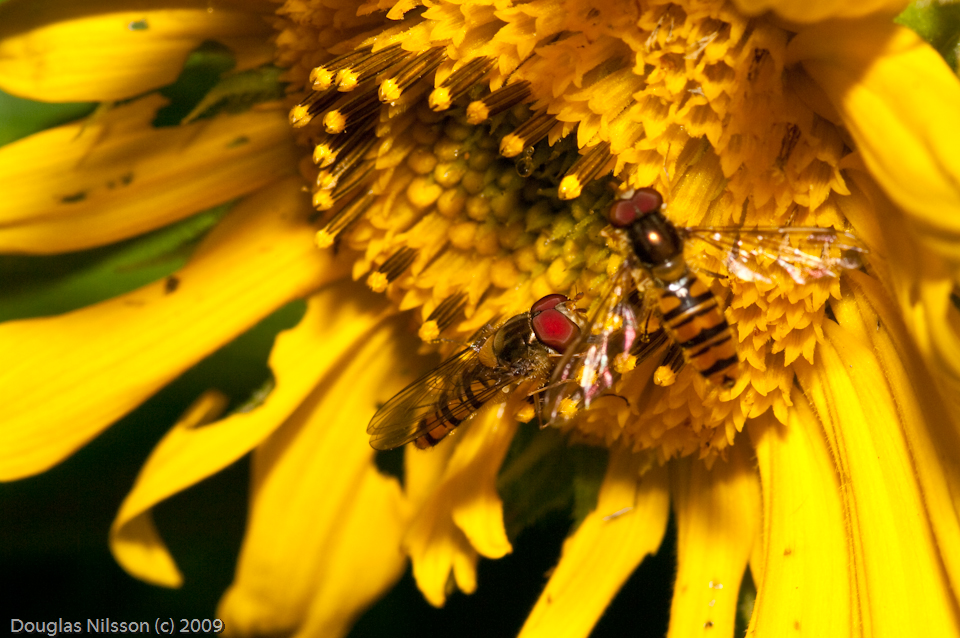
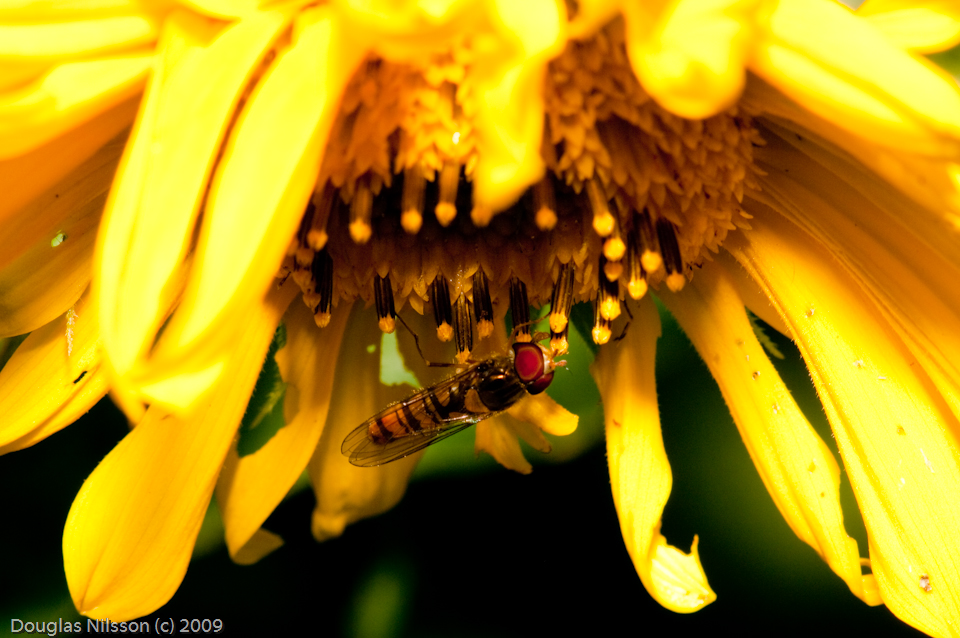
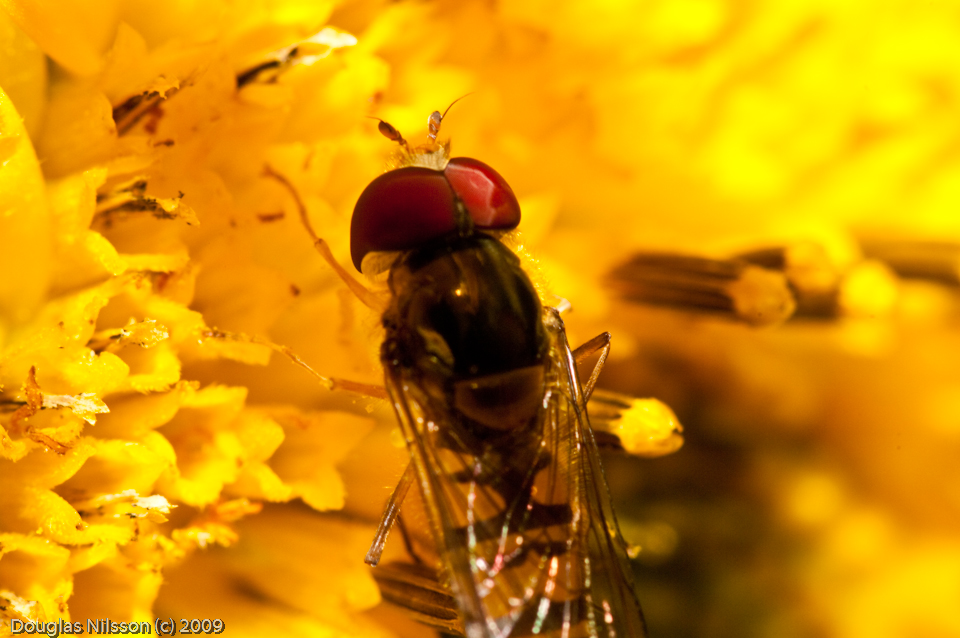

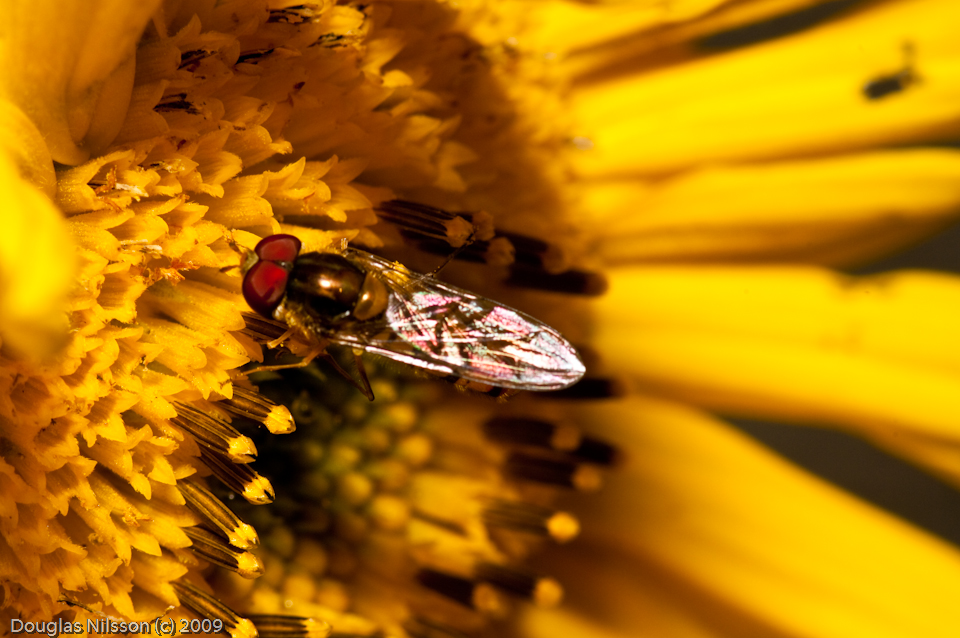
18 August 2009
BUMBLE BEE IN BOKEH (BIB)
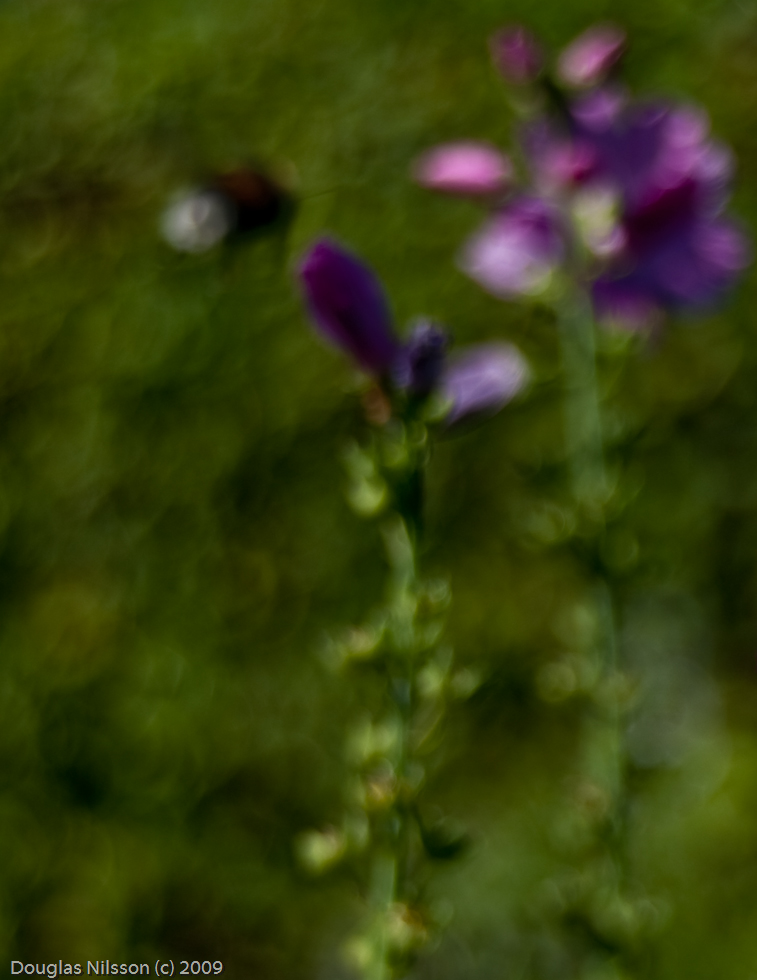
I've noticed that bird photographers call pictures with a bird in flight for BIF, and that sometimes people use the same abbreviation (for fun) for a flying bee or bumble bee. But this one is BIB, Bumble bee in Bokeh.
Is this just terrible to look like, or does it look like the garden does without your eye glasses? Or is it actually a bit of beauty? You see the bumble bee, right? I didn't until in post processing, so that is pure luck, but the play with bokeh is on purpose, although this is a crop where I've ditched the sharp flower to the left.
The lens is a ~40 years old German m42 mount Meyer-Optik Görlitz Lydith 30mm f3.5 full open. It is one of those zebra striped lenses. Luckily there are enough m42 versions around for you to get one rather inexpensive, unless you want to adapt a Topcon, Exakta or Pentina mount to your camera. I would say it is worth it. The bokeh is smooth like butter. It lets you paint like an expressionist with your camera.
Now, where is that flickr group where you can only post pictures where at least 20% of the surface is bokeh...I think this picture will qualify.
By the way, if this blog looks strange, some pictures are missing. It appears that flickr have currently got itself invisible photos...let's hope it will resolve soon.
MEDUSA UFO?
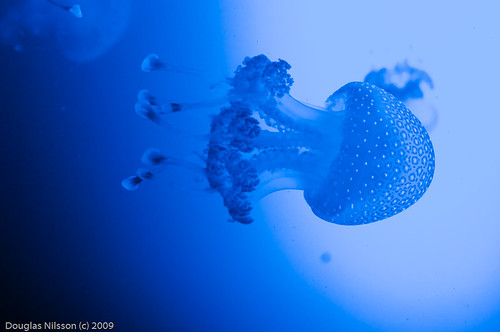
Looking at these images one could wonder if this is a picture of a UFO or an alien from another planet, so different is this life from what I see around me every other day.
These photo's where taken at the medusa/jellyfish aquarium at Universeum (a sort of hands-on science museum) in Gothenburg, Swedish west coast. The low light conditions made me use the SMC Pentax-FA 50mm 1:1.4, which is very suited for this sort of conditions.
Yet another reminder that there is always good to have a really fast lens in the bag. This implies a prime lens, zooms are rarely faster than f2.8 and often slower. But even with only one focal length you can usually adapt to that (zoom with your legs), but if the lens is just too slow, you cannot do anything (except turning up the iso to 6400, but that rarely leads to a happy ending).

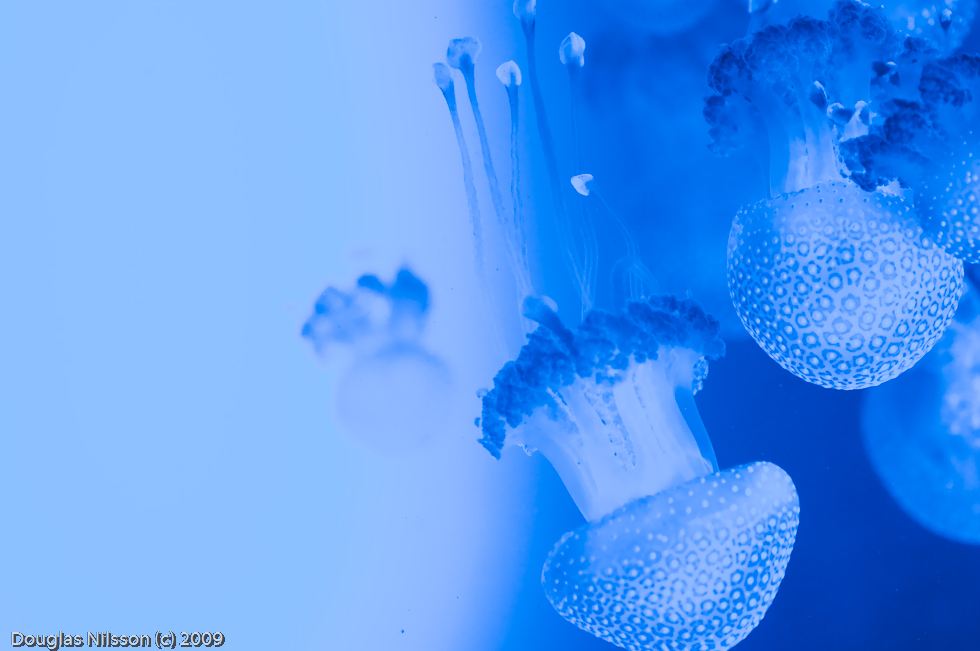


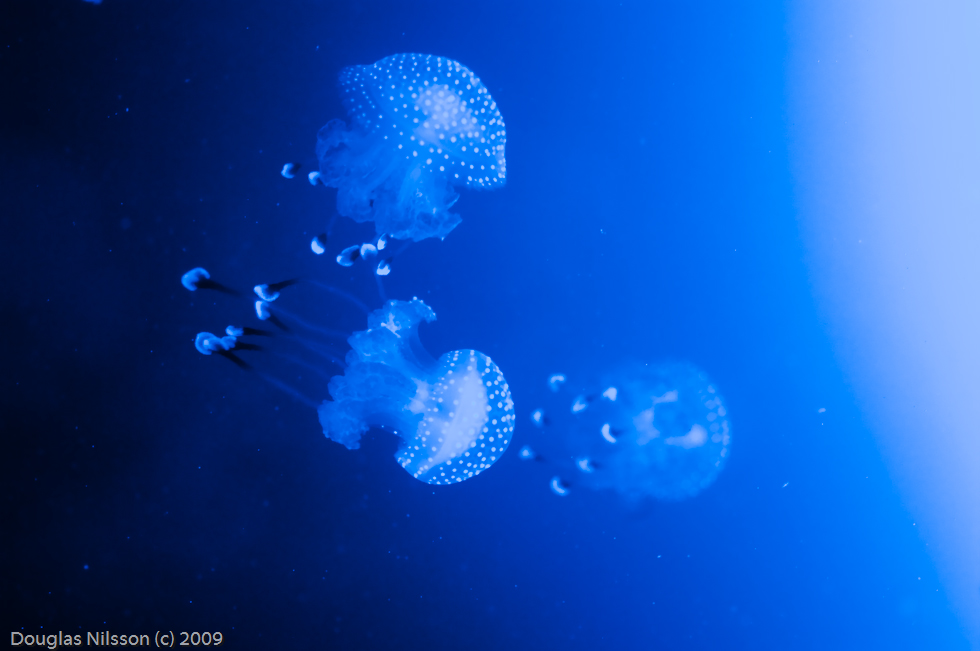
11 August 2009
SHOOTING PEOPLE
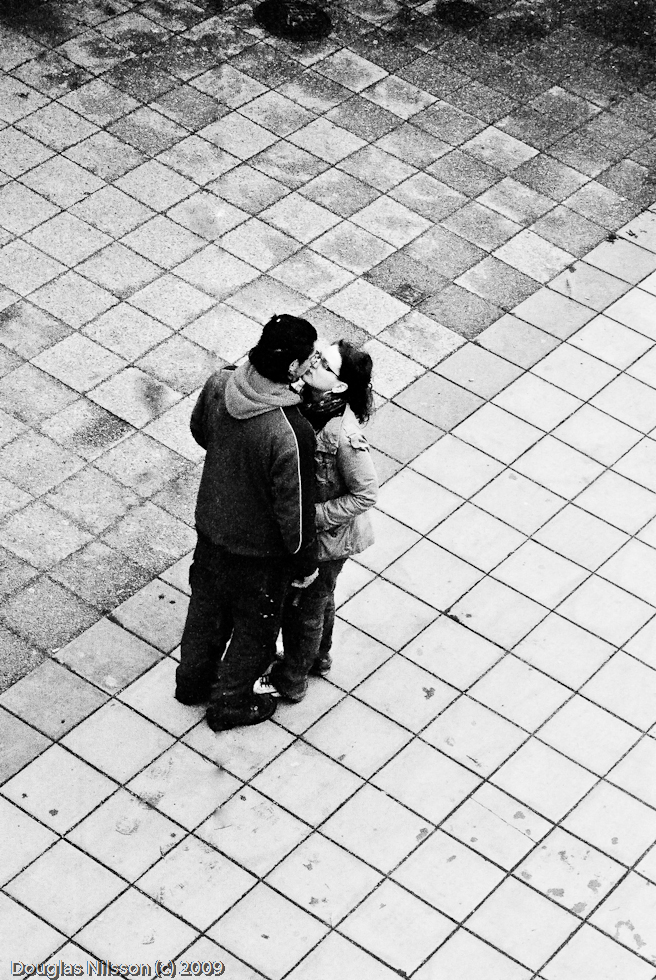 So far one could think from my infrequent blogging here that my main interest is macro photo. On the contrary, what I shoot most is probably people, not bugs. Since my first camera my main subject have been people around me. People I know, people I don't know. Sometimes I ask before I take the picture, have a dialog of sort, get to know the person. Sometimes, it is as much a moment that is the subject as the person, and I take the photo, catch the moment, before it is gone.
So far one could think from my infrequent blogging here that my main interest is macro photo. On the contrary, what I shoot most is probably people, not bugs. Since my first camera my main subject have been people around me. People I know, people I don't know. Sometimes I ask before I take the picture, have a dialog of sort, get to know the person. Sometimes, it is as much a moment that is the subject as the person, and I take the photo, catch the moment, before it is gone.The first picture was such a moment. It is taken from a parking house two stores up. I was just focusing a 85mm lens on a young man and woman standing on the small square below while they were talking...not really intending to take a picture, looking for something more interesting...and all of a suddenly they kissed, and I pressed the shutter. The old Konica T3 film SLR in question was both scratching the film (which took some editing to hide) and leaking light which stole contrast from the picture. But it was evident when I saw the negative that I had to save this photo, because I happened to catch a perfect moment of love. Currently picking pieces from the failing camera to save another.
The second photo is shot with a 135mm, the second best 135mm Pentax made, the SMC Pentax 135mm 1:2.5, on a Pentax KX in a shopping center on 400 ISO black and white film. The women are participating in a sort of make up demonstration, so focused that I could shoot the picture without getting their attention. The lights around the mirror certainly help given that they surroundings were otherwise rather dark with only 400 ISO. Perhaps also a moment of love, but for what?
The third photo is shot with a digital Pentax K20D and the SMC Pentax-DA 10-17mm at 17mm. It represents a different approach. The first two shots are taken with help of short tele lenses that allow me to observe and catch the light, the moment, unseen. With the wide angle shot of the old man and the even older motorcycle, I am acting totally openly. He must see me when I take the picture, but he does not care or he only have eyes for the bike. Perhaps this shot is also about love...nostalgic love.
The final photo is taken this last spring on Tri-X film with the SMC Pentax 28mm 1:3.5 on the KX (yes, it is a favourite camera) capturing a busy and a less busy student at the Stockholm University campus. I'm standing right in front of them with the camera openly in my hands. But I am invisible, because it is not in front of my face, I'm apparently fiddling with it, but I can't be taking a photo...can I? Shooting with a wide angle from the hips are also a good method to catch a moment completely naturally. Perhaps this photo is also about love...unfortunately the love for cigarettes.
You may have noticed that all four examples I've chosen are black and white, even if their original had color. This is correct. To me, people have no color. It is easier to isolate and emphasize the important parts in a picture if you do it in black and white. So I believe. But there are exceptions.
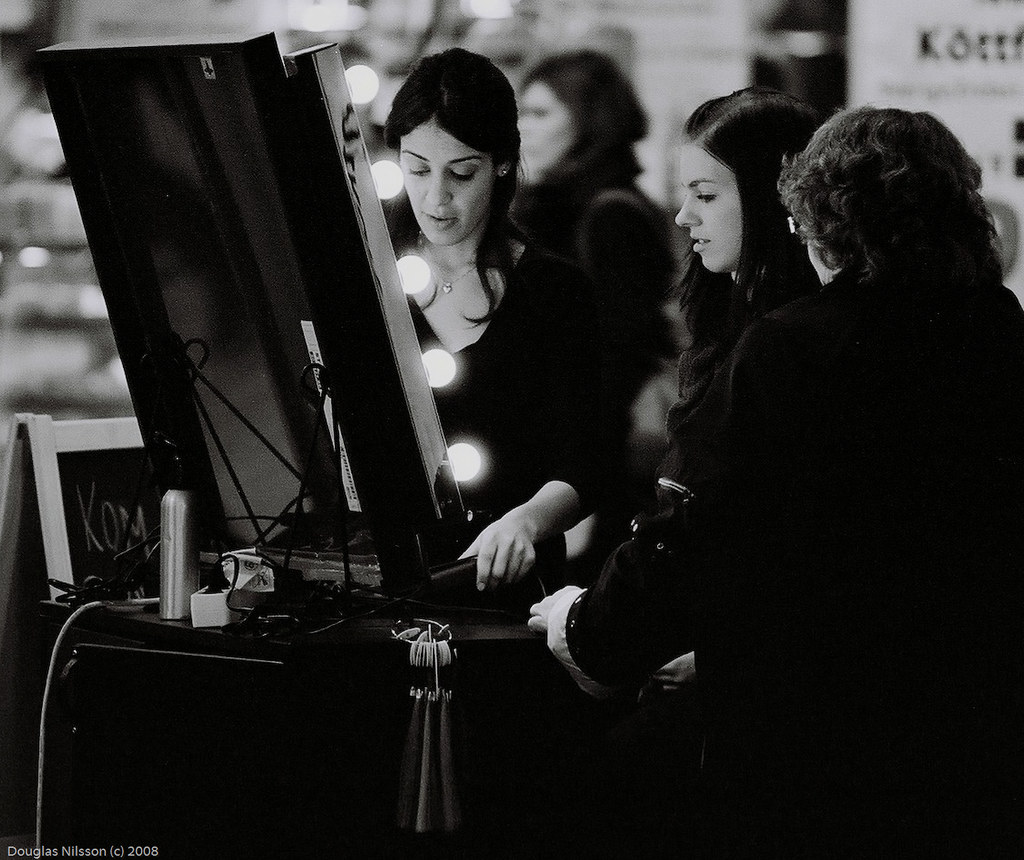
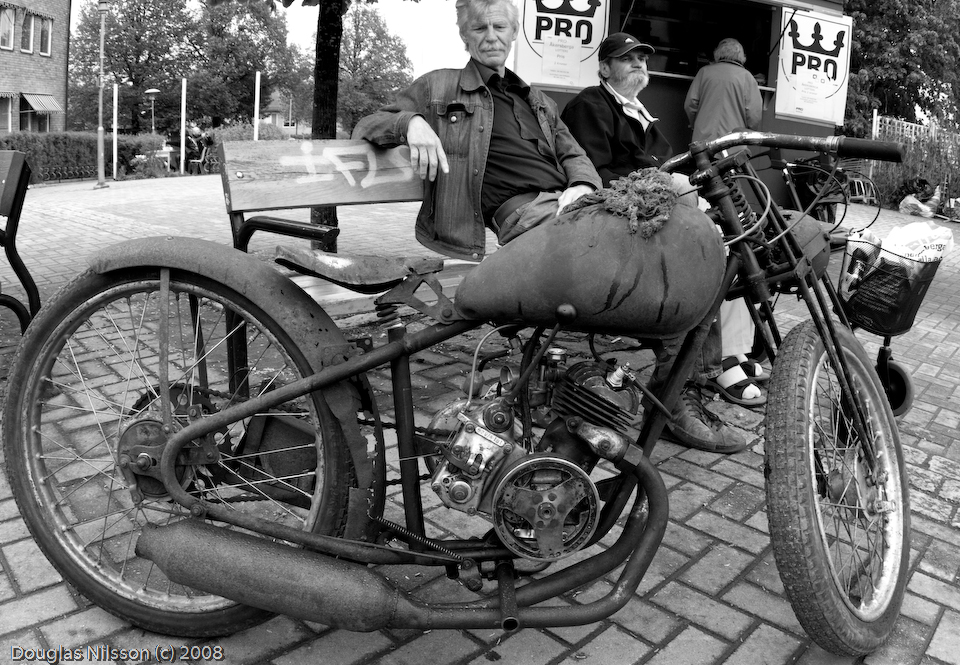

2 July 2009
CUCUMBER SPIDER
Found this Cucumber green spider (Araniella cucurbitina or Araniella opisthographa, you need a microscope to see the difference) in an ambush in one of our daisys. At least I think this is the correct name. It was sitting on the inside of a net which was spanning accross the flower. What I like with shooting spiders are that they are very patient models. Very patient. This one also have hairy legs, but I think the nice colors makes it more pretty than the cross-spider. Not as pretty as the butterflies I've been chasing around here, but they on the other hand have no patience at all!
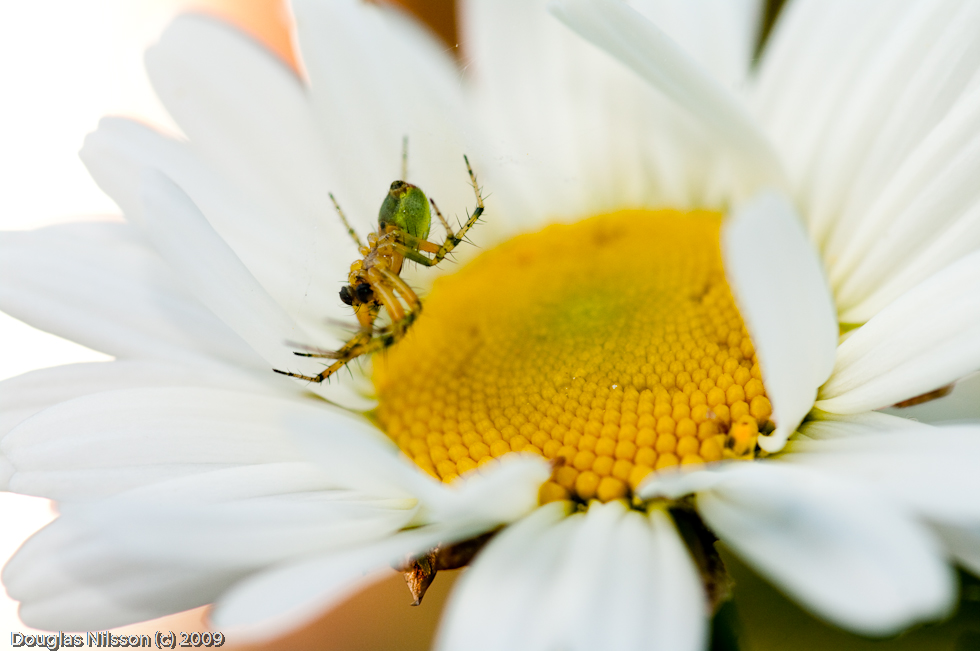
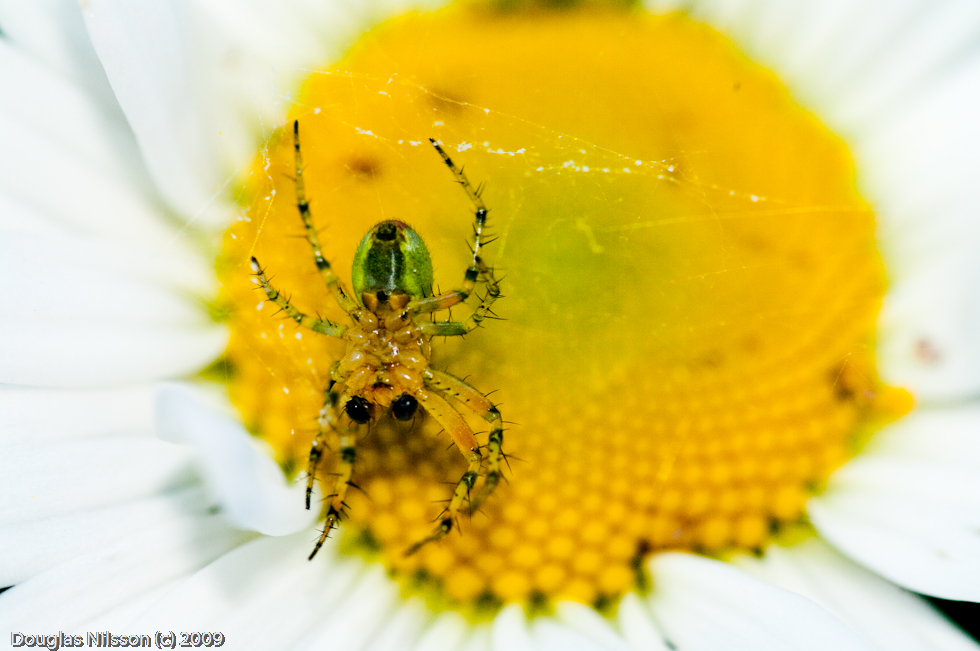


25 June 2009
BUTTERFLIES, WHAT A STRANGE NAME!
Such beautiful and fragile creatures deserves a beautiful name: fjärill (Swedish), papillon (French), perhonen (Finish), mariposa (Spanish), farfalla (Italian), schmetterling (German) ... the most beautiful I know of is the Danish sommerfugl (Summer-bird). But what about English? Butterfly? Flies are not on the same map in my opinion...more uggly than beauty...and I've never seen any summerfugl eat butter! But this blog is in English, so I will have to do with butterfly.
I've always admired the photographers who are able to produce artistic pictures of flying bugs, not only documenting the specie etc. It is hard enough to catch them in the finder, more so to get them inside the DOF, then you need to think about where the DOF start and end and what more that is inside it, what is behind the DOF in the bokeh, to think about composition, when the bug is flying here and there. Luckily many of them are preoccupied by some flowers or similar, which helps, but it's not easy. It appears to me, with my limited experience, that the most difficult bugs to shoot flying is dragonflies and their different cousins. Ohh, so nervous, manoeuvring like helicopters on steroids. Second position is occupied by butterflies. Even more nervous than the dragonflies, not so good on aeronautics, flying like if they were affected by Brownian diffusion. Worked with the laptop in our garden today, and on the nearby daises several butterflies landed repeatedly, but each time I stood up and reached for the camera, they left like frightened rabbits...
...but a while ago I cheated...
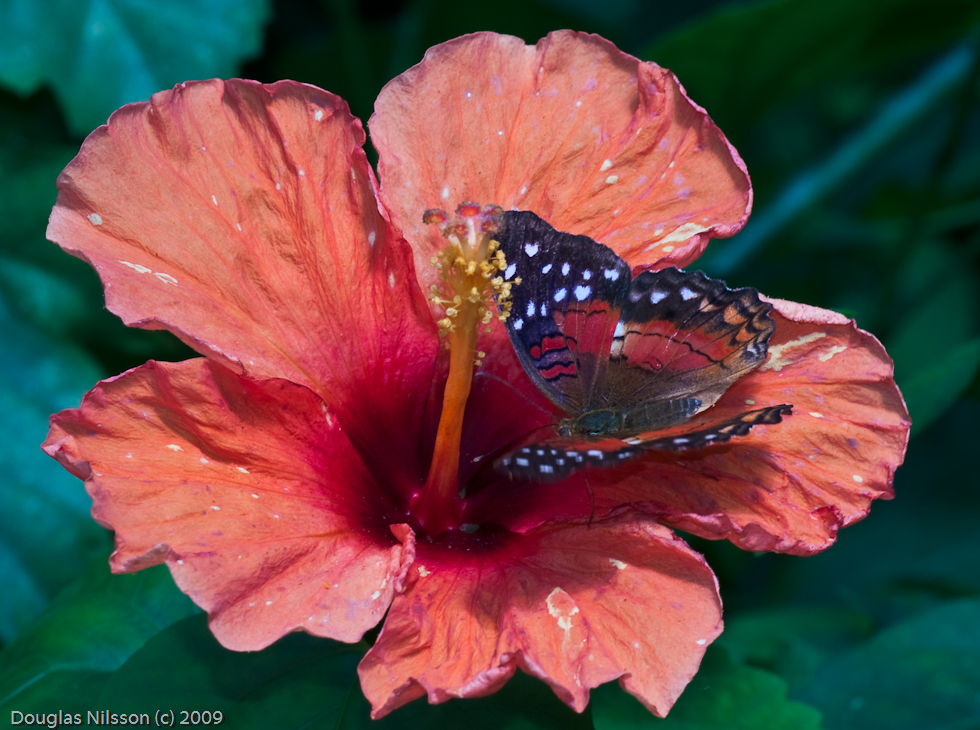
 Butterfly wings have two sides that may look very different.
Butterfly wings have two sides that may look very different.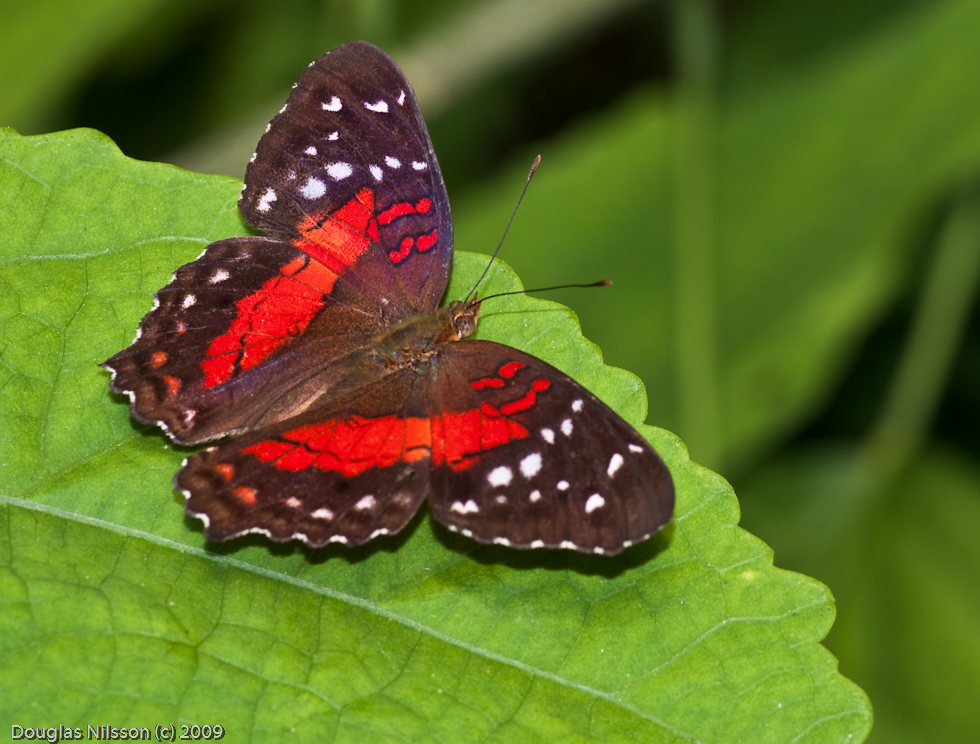 Not so bad...
Not so bad... Quite OK...
Quite OK...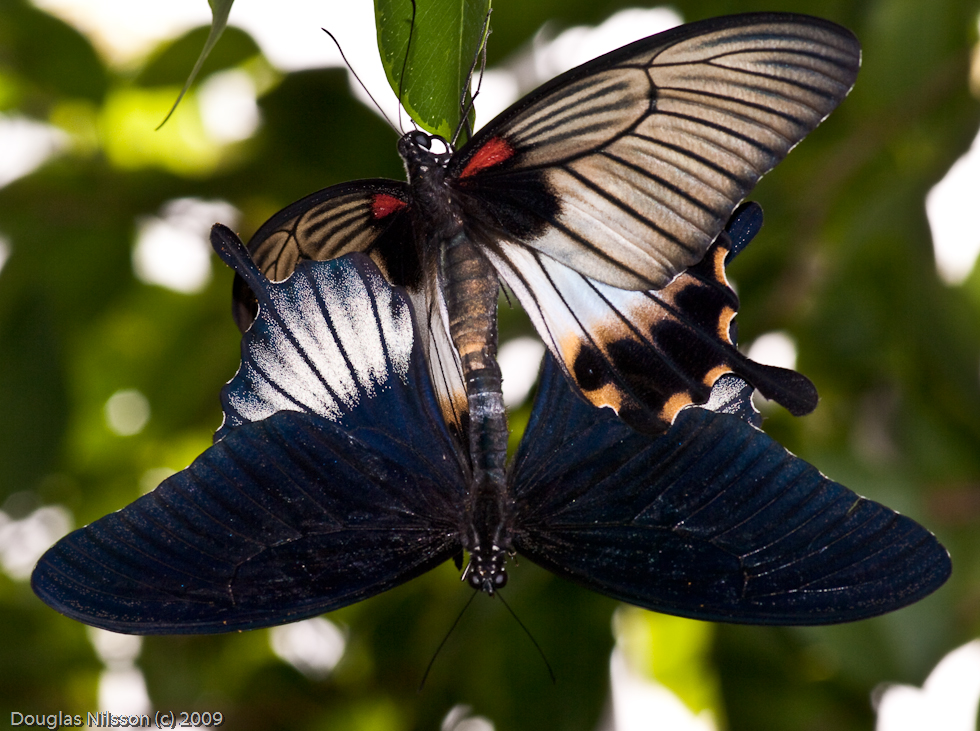 I know, far too busy background, but there were no alternaitve...or were there?
I know, far too busy background, but there were no alternaitve...or were there?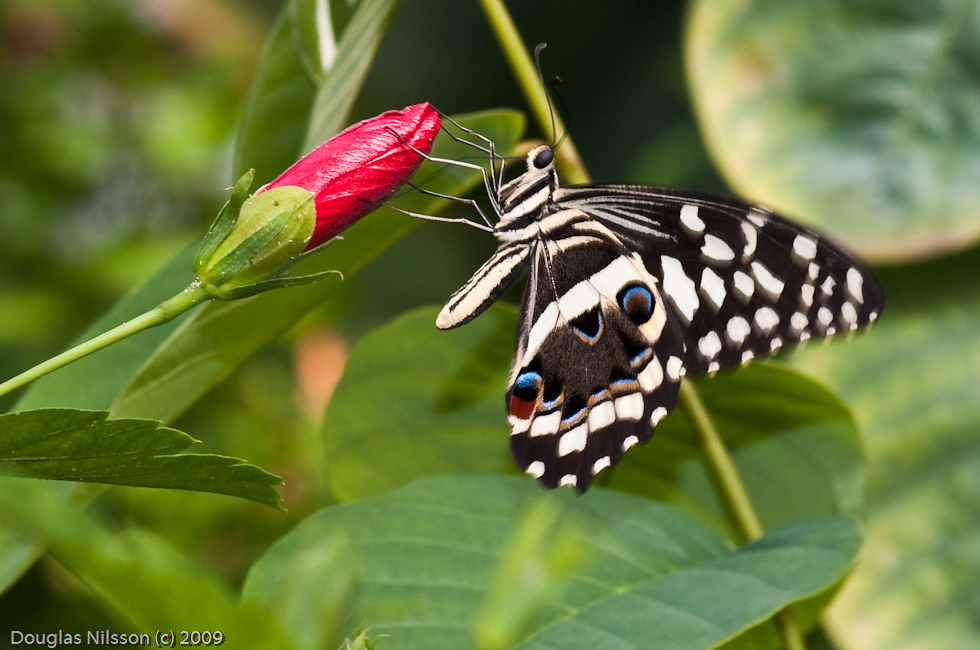 Dam grass straw!
Dam grass straw!How did I cheat? I went to the Butterfly-house in the Haga park in Stockholm with my kids and my mother. After an hour in the heat and high humidity, we were soaked and the SD card was full. Those butterflies are much bigger than the local wild species and they are so used to tourists that they doesn't care that very much about me and my lens.
19 May 2009
FUN WITH DFA 100mm macro AND A TUBE - GREATER THAN 1:1 MACRO - OR A LADY WITH HAIRY LEGS
 I'm often amazed by macro photo's taken by some photographers. What appears most difficult to me is not the technical side: how to get the picture sharp enough, bright enough, with enough DOF etc, but the estetical side: how do you compose a photo in macro, how do you remember to select the background to get a good bokeh, when you are trying to track a non-cooperative bug?
I'm often amazed by macro photo's taken by some photographers. What appears most difficult to me is not the technical side: how to get the picture sharp enough, bright enough, with enough DOF etc, but the estetical side: how do you compose a photo in macro, how do you remember to select the background to get a good bokeh, when you are trying to track a non-cooperative bug?I make my own humble attempts, mostly for the fun of it. Since our Swedish bugs are often not as large and nor as colorfull as many of those that that I've seen from for example the tropics, it will take some trick to impress with them. So what about macro greater than 1:1? That would give me a chance to both test the limits of the SMC Pentax-D-FA 100mm f2.8 macro lens and the new screwdrive/SDM autofocus tube that I've made out of a 2x converter.
Firstly, below are two shots of flowers from our garden, one of them some white Narcissus. These shots are taken at about 1:2 ratio. Then follows a single picture of a spider shot at near 1:1 using the built in flash. The real spider was not more than about 5mm in this position, legs included. Then I mounted the autofcous tube I've made out of an old Kenko 2x converter. It has both screwdrive gear and SDM contacts. With the DFA100mm macro it will of course focus using the screwdrive. Or will it? I had not tested it before. So it was interresting to see if it would allow autofocus to work on the lens. The tube is about 25mm. I think that results in a 100mm ~f4.2 lens with a maximum reproduction ratio of 2:1 (twice the real size).
And it did focus...most of the time. It worked best to set the camera on using just the center AF point. When focusing on a small spider in a net, it is not hard to understand that the camera might get confused when the spider is some 20cm away and the background behind the web was about 1-2 meter away. That caused some hunting, but as the web was moving in the wind (the spider sat thre calmly without being impressed by me or the camera), I was happy to have the AF.
Pictures turned out quite good with my standards. Below are two examples that turned out both in focus, OK exposed, and with a calm background with ok Bokeh. Handheld, a tripod would not have worked since the web was moving back and forth as much as 5cm in the wind, built in flash, 800 ISO, no cropping, only some minor changes in lightroom. It does look like a real monster, doesn't it? At 2:1 it cover about 50% of the width of the sensor, and does not have to stand back to any decimeter sized tropical spider, despite its mediocre 5mm in real size. As far as I can judge, this is a European garden spider (Araneus diadematus) aka diadem spider aka cross spider (korsspindel in Swedish), a female. A lady with hairy legs ;)
The flash caused some reflections in the web, but the lens combo appeared to be quite flare resistant. The first picture above is the only one with massive flare, but in this case it is almost a special effect. Finally, I took a walk around the garden to see if I could find some more motives, but the bugs were hiding. Except in the plum tree, where I was surprised to find that there were sitting an ant in almost every flower. I did not know that ants were eating pollen?!
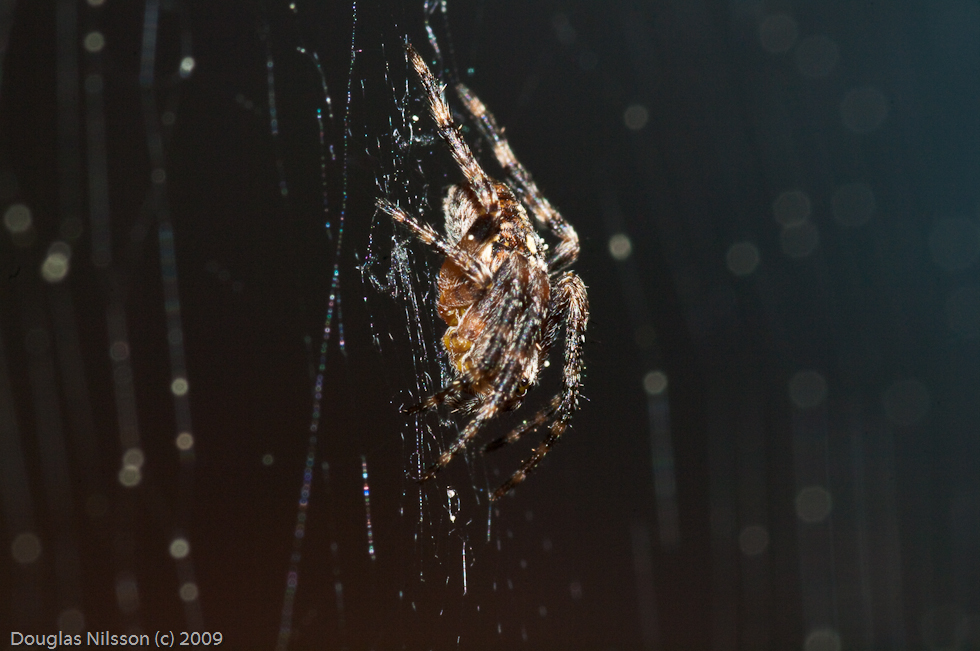

17 May 2009
MORE SPRING (THROUGH THE SMC PENTAX-A*135mm f1.8)
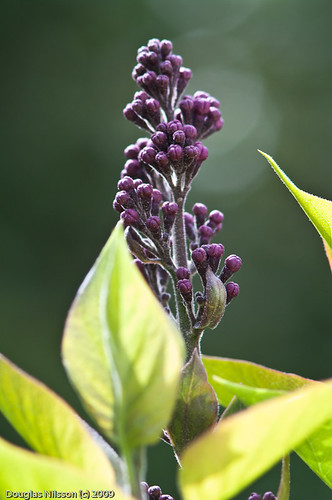 The spring is advancing more every day. Now all trees except the realy old ones have leaves, and more and more flowers for every day. Still very few butterflies.
The spring is advancing more every day. Now all trees except the realy old ones have leaves, and more and more flowers for every day. Still very few butterflies.Took out my most valuable glass one morning this week, the legendary SMC Pentax-A* 135mm f1.8, to try it out with a dedicated SMC Pentax-A 2x-S converter. What can an excellent lens with a very good converter do. Usually converters are dissapoing since the result is always a step worse than the worst component, weather this is the lens or the converter. So a mediocre converter on a mediocre lens is really bad, and a good converter on a good lens is only mediocre. But what does excellent and very good combine into?
First I shot some Lilac flowers, plum and apple blossoms playing with the thin DOF testing the bokeh. Contrast came out better than with any converter+lens combo I have ever tried and the bokeh was usually smoth as well. Only on one of the Lilac shots did I get a bit of aperture blade reflexes. The resulting lens almost gives me a 300mm f3.5 (almost), which I belive is also by far a better option for birds than my old Tokina 400mm, even if I have to do some cropping.
I got some decent shots on a black bird while it was eating earth worms. Jummy! But his shy wife watched me with suspicion in her eyes from the bushes, and the curious tree sparrow (antenna sparrow?) watched us from the neighbours roof. These birds we have in the gardens in Sweden are not that colorfull and exotic, but they are fun to watch just for their behaviour.
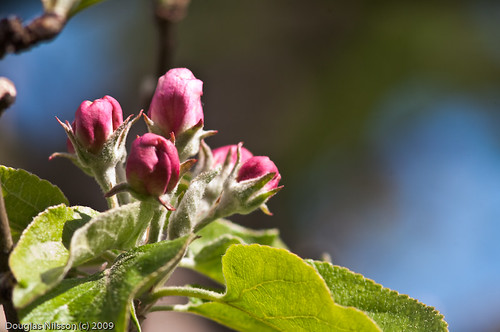

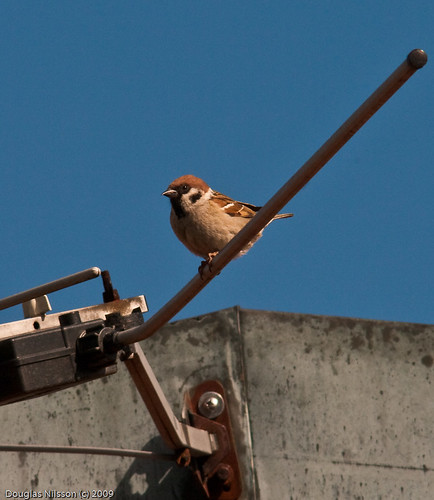


5 May 2009
FINALLY SPRING!
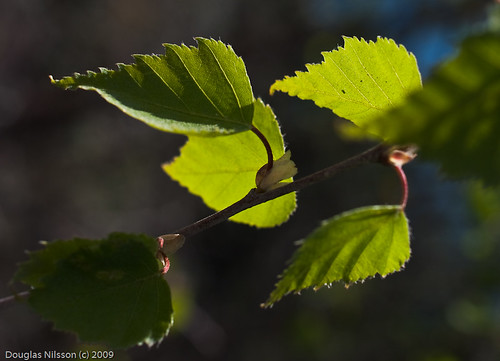 We spent a fantastic weekend with my parents in law. Down there in south-western Sweden spring had come a bit further than here in Stockholm. Many trees, especially the birches, had just got tiny little leafes that were shining in a light green color. While driving down I realised that it gives the landscape a character similar to that in the autumn when the leafes go yellow. The contrast between the coniferous and deciduous portions of the forest are larger than in the middle of the summar season.
We spent a fantastic weekend with my parents in law. Down there in south-western Sweden spring had come a bit further than here in Stockholm. Many trees, especially the birches, had just got tiny little leafes that were shining in a light green color. While driving down I realised that it gives the landscape a character similar to that in the autumn when the leafes go yellow. The contrast between the coniferous and deciduous portions of the forest are larger than in the middle of the summar season.One of the days we took a hike to a lake nearby. It is actually an artificial lake created to get a drinking water storage for the area, and it is called "Storsjön", which translated to "great lake", not to be confused with the bigger namesake in norther Sweden. Despite being artificial, it is a nice hiking area with mixed forest on the beaches , some cliffs and a few islands. Good canoeing area.
After a good lunch, while the kids were playng in the water, I rested on the blanket we braught, looking up into the canopy of fresh yellow-green leafes ahead of me against a brilliantly blue sky I realised that this made a nice motive and got the camera.
All pictures are taken with the SMC Pentax-DA 35mm f2.8 macro ltd lens on the K20D, except for one taken with the SMC Pentax-DA 10-17mm fisheye, and the wood anemone that was taken with the Tamron adaptal 2 SP 90mm f2.5 on the 2x convereter (making it a 180mm f5 1:1 macro lens). For the anemone I also used the AF240Z flash on a macro flash adapter.
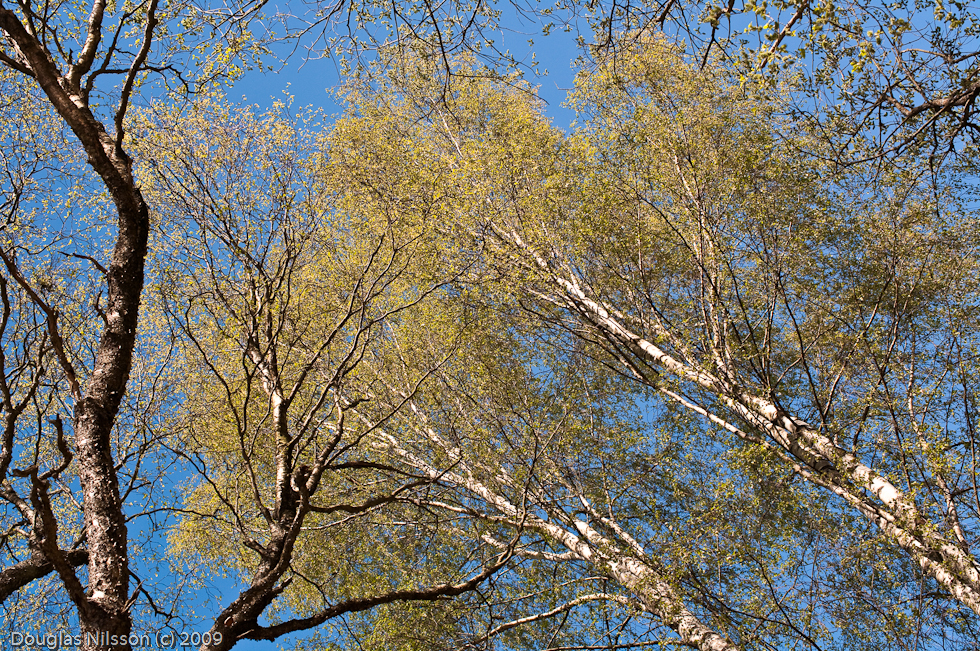

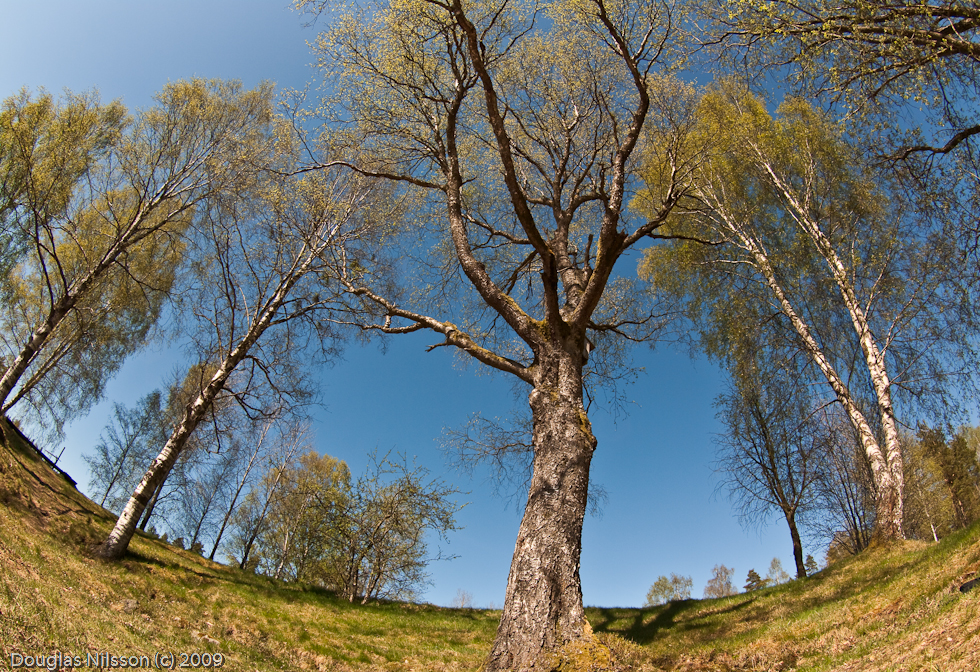
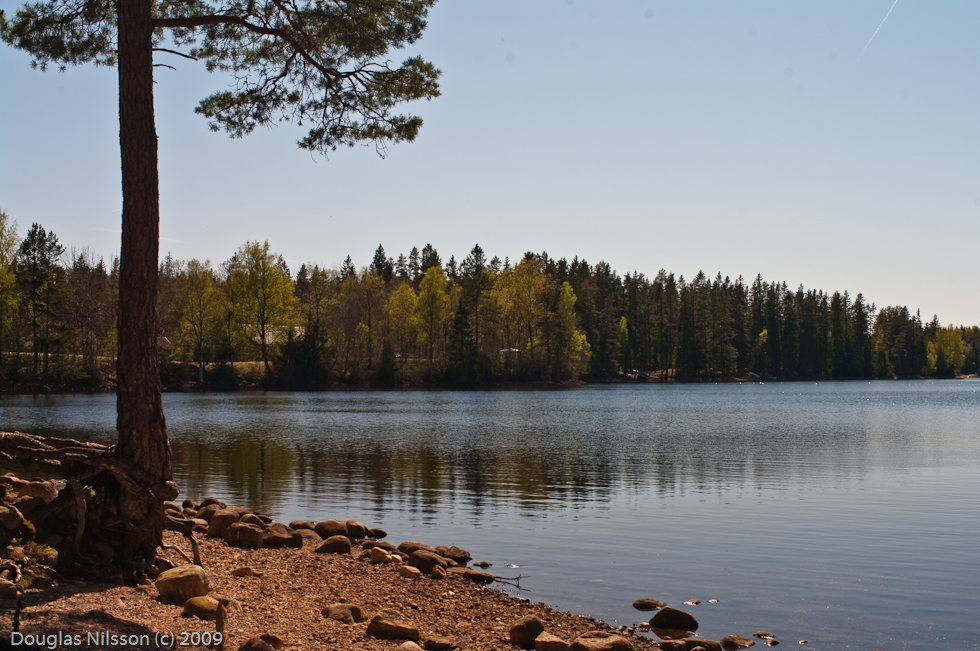
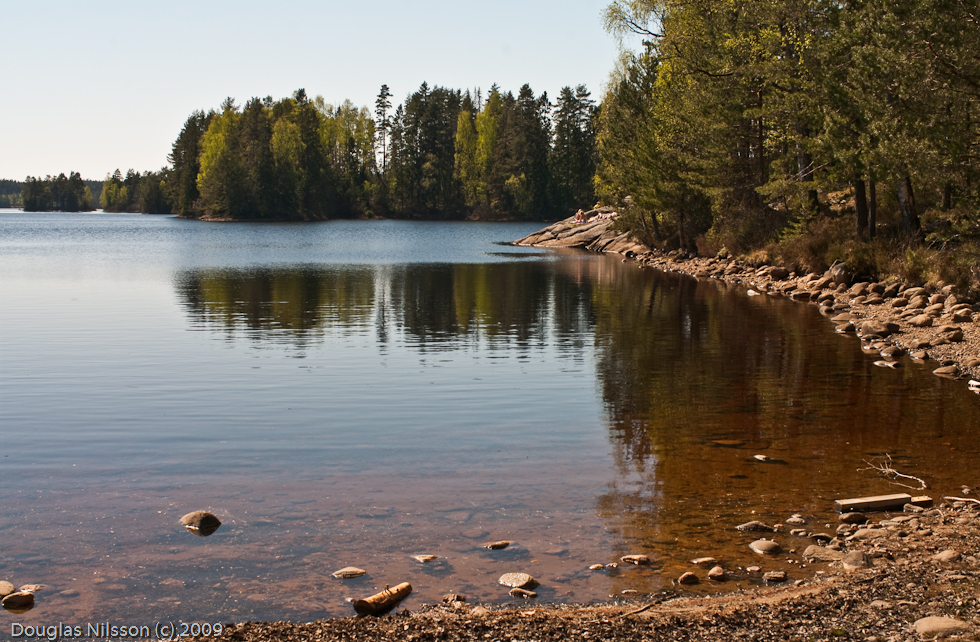
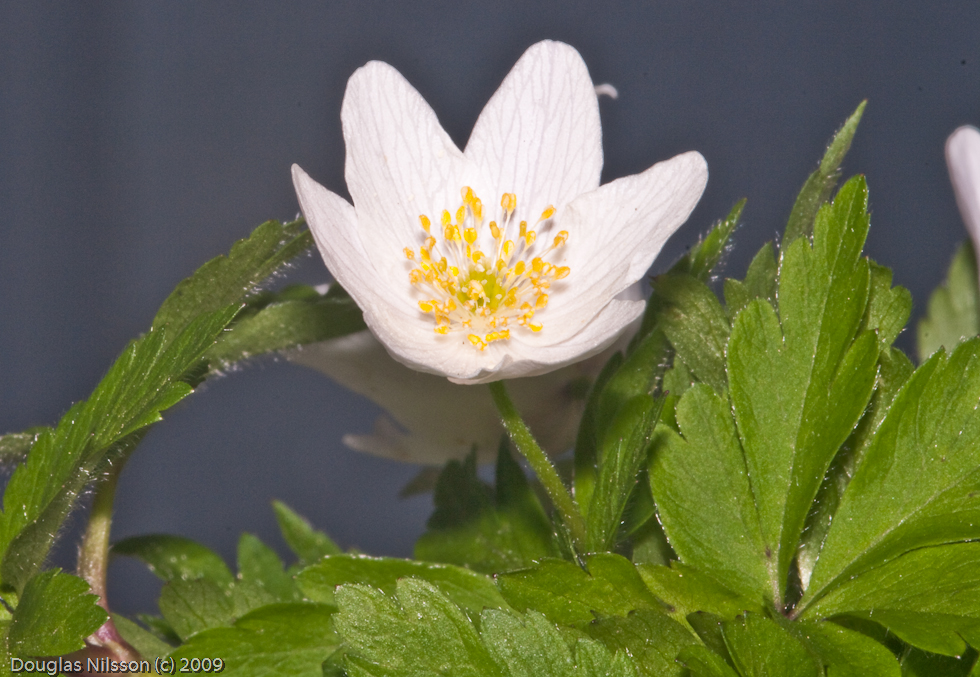
Subscribe to:
Posts (Atom)


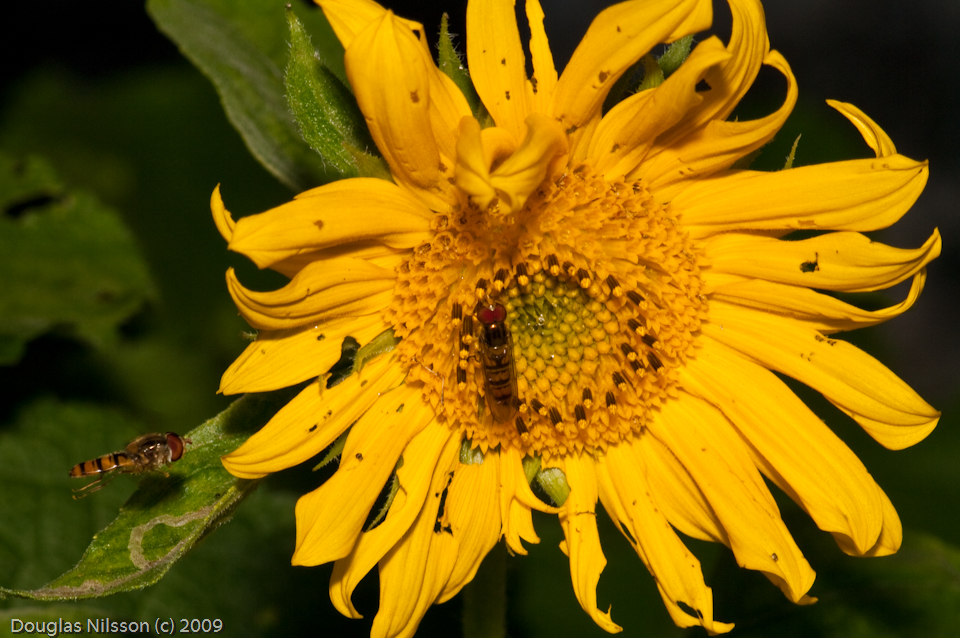
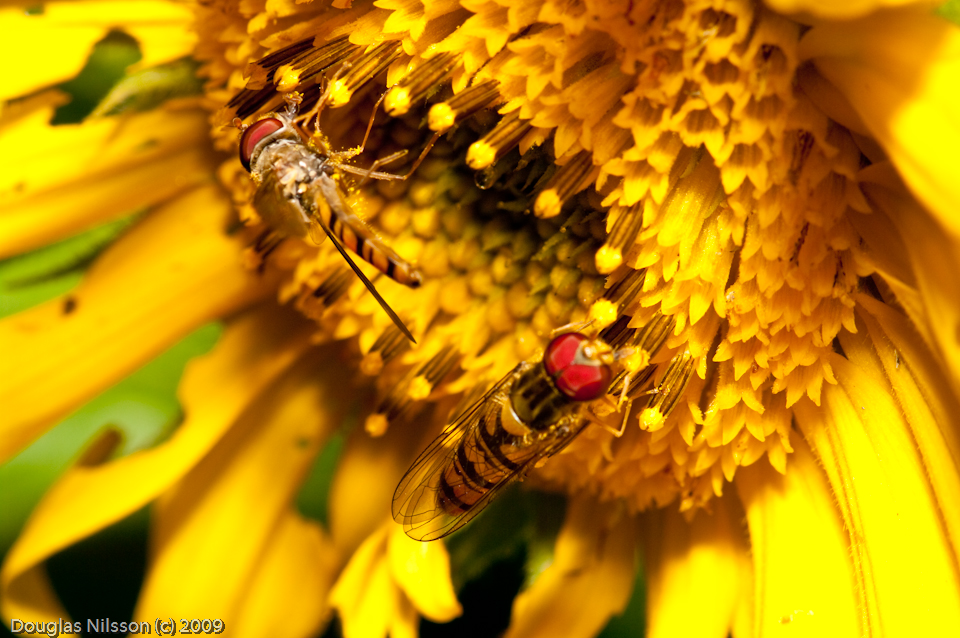






.jpg)







